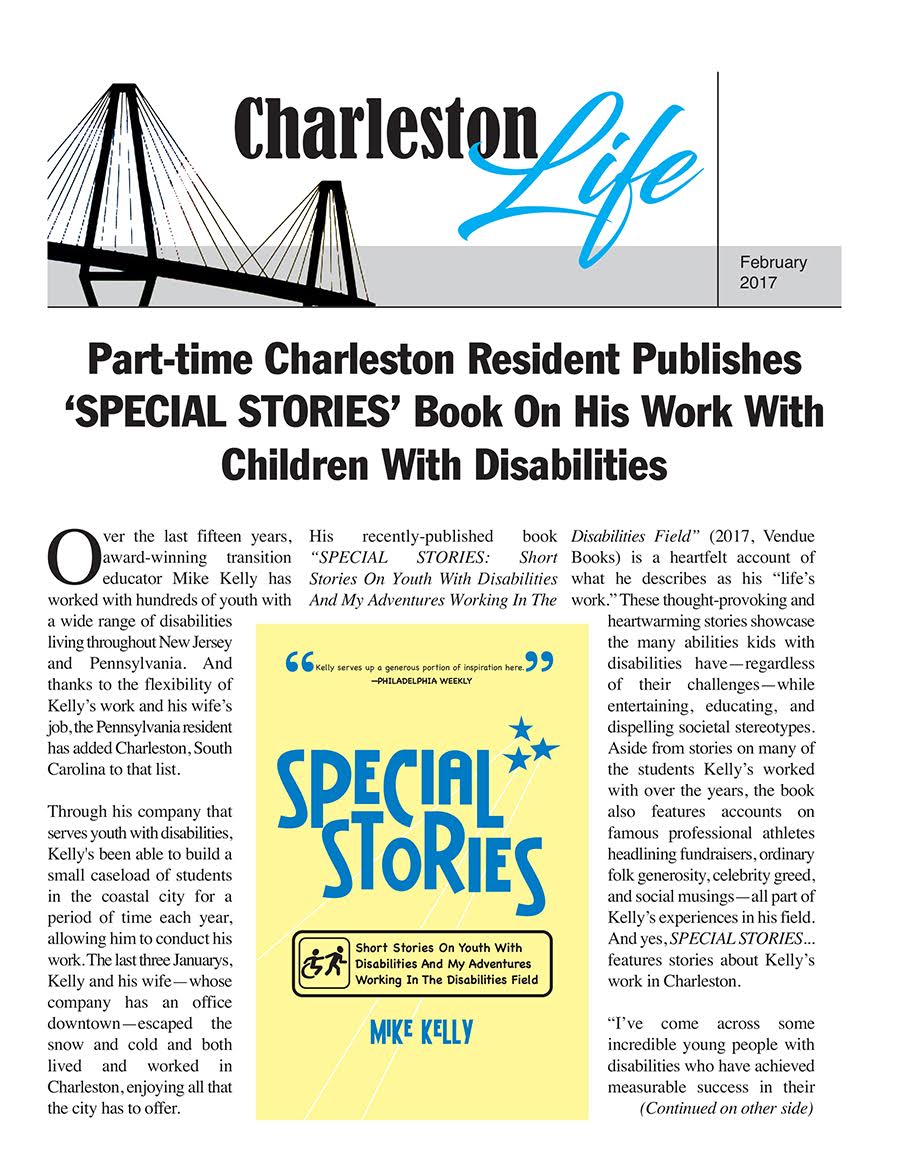Special Stories- Teen with challenges shows her abilities- PART 2 of 2
Special Stories- Teen with challenges shows her abilities- PART 2 of 2
During my next visit to Charleston the following December, I was once again contracted by Lindsay’s parents to help their daughter with a new project. Her parents reported that she was still working well with Carly at The Market, but Lindsay had recently fallen into a depression because her beloved Bichon Frise, Snowflake, just passed away. The dog was the love of her life. Lindsay still wanted to keep her job assisting Carly, but she was getting the itch to sell some of her own works, as well. Her folks hired me to see what I could do to make it happen.
A budding artist in her own right, Lindsay said that while she loves working for Carly, she’d love to display her own artwork within The Market. I saw some of her paintings and thought they looked fantastic and unique—certainly worthy of being sold. Though I’m no art expert, I believed Lindsay had a gift.
I realized that if someone could sell millions of Pet Rocks, anything could be sold to anyone. I also realized that even so-called art experts are no experts, either. The story goes that art experts dismissed and refused to buy paintings from Vincent Van Gogh. Van Gogh painted hundreds of works, yet struggled to only sell—depending upon who you believe—between one and three works during his entire lifetime.
So much for experts.
With support from Lindsay’s parents, I filed all the necessary paperwork for Lindsay to be a vendor and sell her work in The Market. She had a table and was set to go, working on the days that she was not working for Carly. I reinforced to Lindsay Carly’s teachings of the ins and outs of managing her work—from set-up to display to sales to interacting with customers and handling money. I took turns with her parents, working beside Lindsay and assisting her. During the brief time that she displayed her artwork, Lindsay sold a total of nine pieces: Three paintings, two bracelets, two necklaces, and two pairs of earrings. This, of course, was three paintings, two bracelets, two necklaces, and two pairs of earrings more than Lindsay would have sold had she not undertaken this entrepreneurial endeavor.
Lindsay proved that her art was worthy of being sold—which was a major accomplishment. She enjoyed the thrill of victory that each sale brought to her, and wanted more of that feeling.
With Lindsay’s parents’ permission, Lindsay’s help, and some community support, I was able to secure a donated room within a mom-and-pop-owned bakery/coffee shop to be used as a gallery for one night for Lindsay to display and hopefully sell her art. The owner of the establishment was on board with the concept from the get-go, and was actually quite excited to help my student. Lindsay and her parents gathered a dozen and a half of Lindsay’s paintings, drove them over to the coffee shop, and carefully placed them on walls and easels, for display.
A week before Lindsay’s art exhibit, flyers were distributed and posted throughout downtown Charleston and my press releases announcing Lindsay’s art exhibit made their way into the local papers. On the evening of the event, the room looked perfect—the walls adorned with her paintings of The Market, colorful homes of Rainbow Row, the iconic Ravenel bridge, Palmetto trees, night skies, and more.
A few minutes before the official opening at seven p.m., Lindsay stood nervously in the room dressed in her Sunday best clothes. Her parents comforted her and let her know that her art exhibit was going to start in just a couple of minutes and hoped people would come out to buy some of her work. Lindsay took a look around the room, placed her head in her hands, and began sobbing while thanking her mother and father for helping her. I smiled at my wife, standing beside me. It was a touching moment to behold. I—we—just “got paid” again.
Aside from my wife and me, fifteen people showed up specifically for the exhibit, with an extra half dozen curious coffee shop guests wandering in on top of that.
At ten p.m., after both packing and cleaning up, Lindsay left the room $120 richer after selling four pieces of her work. Those four sold works amounted to between one and three more paintings than Vincent Van Gogh sold in his lifetime, so I’d say she did quite well. As you can imagine, Lindsay was on cloud nine, asking when her next art exhibit would be. The template had been set for her to exhibit future works.
For more information on SPECIAL STORIES: Short stories on youth with disabilities and my adventures working in the disabilities field, visit www.specialstoriesbook.com.

